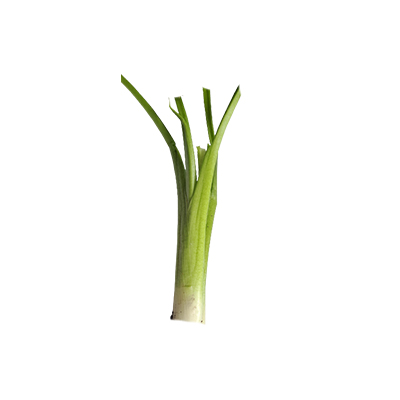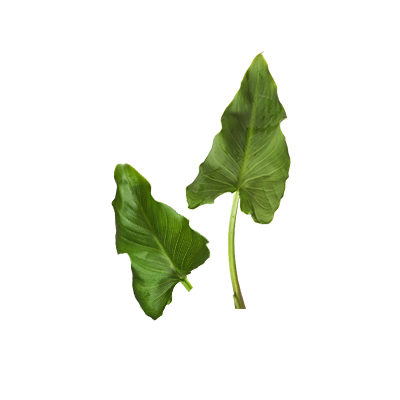Calla Lily
Zantedeschia aethiopica (L.) Spreng.
Araceae
Location in our garden
Principal
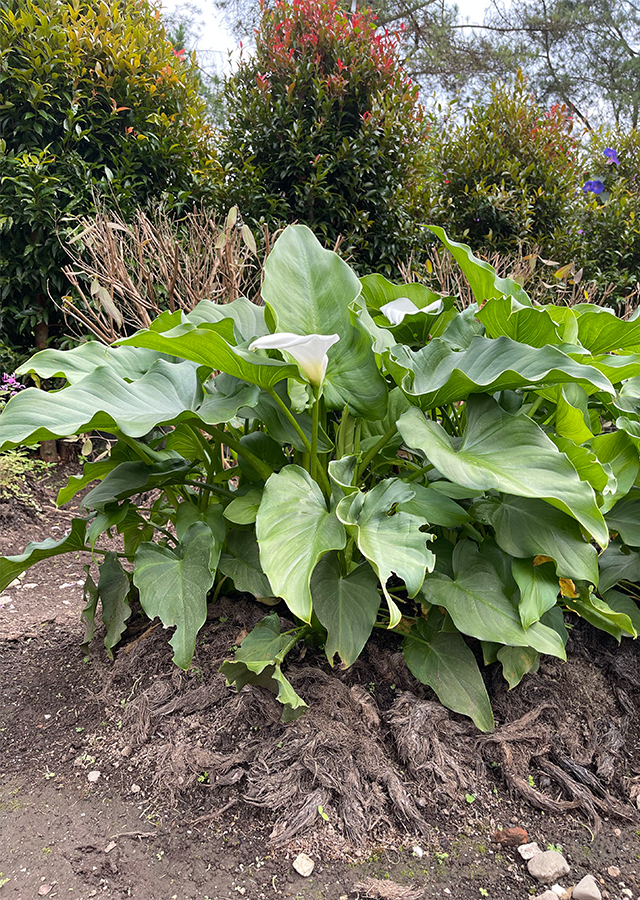
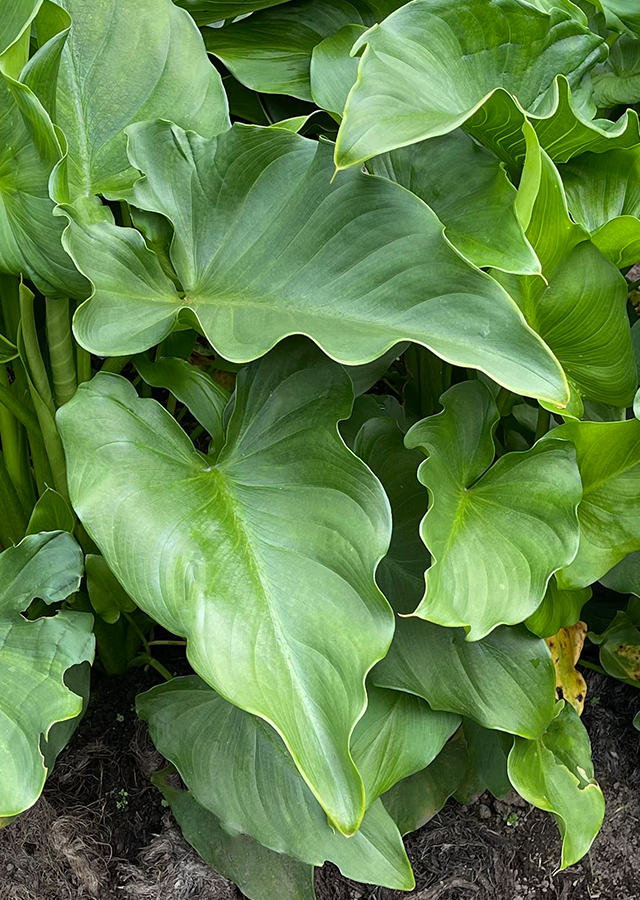
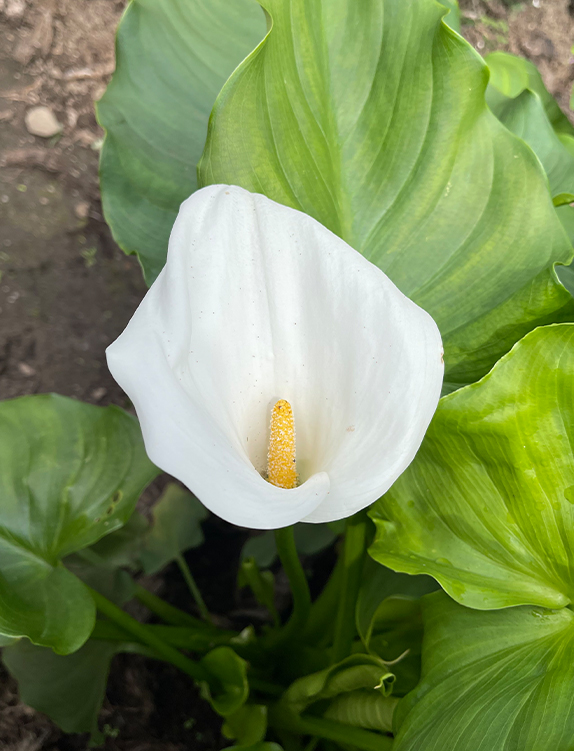
Synonym
Calla aethiopica L.
Calla moschata Moench
Colocasia aethiopica (L.) Link
Habitus
Herbaceous. An evergreen, clump-shaped herbaceous perennial that can grow up to 150 cm tall
Part Used
Leaves
Roots
Stem
The Whole Plant
Rhizome
Growing Requirements
Need Shade
Habitat
Wetland
Riverbanks
Coastal
Grassland
Overview
Calla Lily or Zantedeschia aethiopica is a flowering plant from the Araceae family originating from Lesotho, South Africa and Swaziland. Its genus name was given in honor of Prof. Giovanni Zantedeschi, an Italian botanist and physician. The species name "aethiopica" is indirectly related to Ethiopia as in classical times, the name was used to refer to "south of the known world", namely Southern Libya and Egypt, now known as South Africa. This species has naturalized in Australia, Brazil, Hawaii, India, Italy, Kenya, Malawi, New Zealand, the Philippines, Portugal, Réunion, South America, Spain, Tanzania, Tunisia, England and Zambia. Z. aethiopica is also cultivated commercially as an ornamental plant as well as a cut flower in Africa, Asia, Australia, Europe and the United States. In South Africa, Z. aethiopica is a valuable medicinal plant species also considered an important component of the native pharmacopoeia in Brazil, India, Malawi, Mexico and Tanzania. This species has been used as a herbal remedy for 33 human ailments in tropical Africa, Asia, and North America. In addition, Z. aethiopica also has value as a cleanup of contaminated soil and water as well as an important food ingredient. The leaves and stems of Z. aethiopica can be consumed as a leafy vegetable, but it is not recommended to be consumed fresh or raw, but must be cooked first, because this species contains needle-shaped calcium oxalate crystals which cause irritation, swelling of the tongue and throat, nausea, vomiting, and diarrhea. Cooking it can remove the calcium oxalate content in it. Z. aethiopica leaves are among the top 10 plant species responsible for poisoning cases in the urban area of Johannesburg, South Africa and are one of the most common toxic plants in New Zealand.
Vernacular Names
African Lily, Altar Lily, Arum Lily, Brosimun aethiopica, Calla aethiopica, Egyptian Lily, Florist's Calla
Agroecology
In South Africa, Z. aethiopica has been recorded growing in sandy or rocky areas, streams, along coasts, mountain meadows, at elevations ranging from 20 m to 2,250 m asl. Its growth likes moist places and lots of water.
Morphology
- Roots - contractile form (emerges from the top of the tuber stem and between the leaves). Roots are white, fleshy, thick rhizomes.
- Stems - grow upright, round, soft not woody, about 30 - 60 cm long. The underground part of the stem is thick.
- Leaves - dark green, glossy, fleshy, large, leathery and hairless, ovate or ovate-cordate or arrowhead-shaped, with pointed leaf tips. The veins are parallel pinnate, characterized by a thick, springy petiole.
- Flowers - monoecius, funnel-shaped narrowing towards the end. The outer calyx, the spathe, is shaped like a wide leaf, white to creamy white, fleshy. Inside the spathe, there is a spadix (shorter than the spathe) which is bright yellow.
- Fruits - like small and numerous berries, round in shape, growing at the base of the spadix. The fruit is tapered to the base, green in color and turns orange when ripe.
- Seeds - subglobose or ovoid starch, numbering 1-12.
Cultivation
Plant propagation through seeds and division of clumps.
Chemical Constituents
Anthraquinones, cardiac glycosides, flavonoids, saponins, steroids, sucrose, tannins, terpenoids, cytokinins, cycloartane triterpenes, galactolipids, galactosyldiacylglycerols, phytosterols.
Traditional Medicinal Uses
- Treat boils, burns, gout, inflammation, insect bites, rheumatism, scabs and wounds.
- Overcome respiratory disorders (including asthma and bronchitis), colds, flu, headaches, heartburn, infections, infertility, sore throat.
- Reduce fever.
- Has activity as an antibacterial, antifungal, antithrombotic and anticoagulant, antioxidant, and antihistamine.
Part Used
Reference Sources
- Royal Botanic Gardens, Kew. Plants of the World Online: Zantedeschia aethiopica (L.) Spreng.. https://powo.science.kew.org/taxon/urn:lsid:ipni.org:names:89403-1. 09-12-22.
- Westford Bridge. Zantedeschia aethiopica. www.westfordbridge.co.za/zantedeschia_aethiopica.htm. 09-12-22.
- Maroyi A. 2019. ZANTEDESCHIA AETHIOPICA (L.) SPRENG.: A REVIEW OF ITS MEDICINAL USES, PHYTOCHEMISTRY, AND BIOLOGICAL ACTIVITIES. Asian Jounal of Pharmaceutical and Clinical Research. 12(8).



